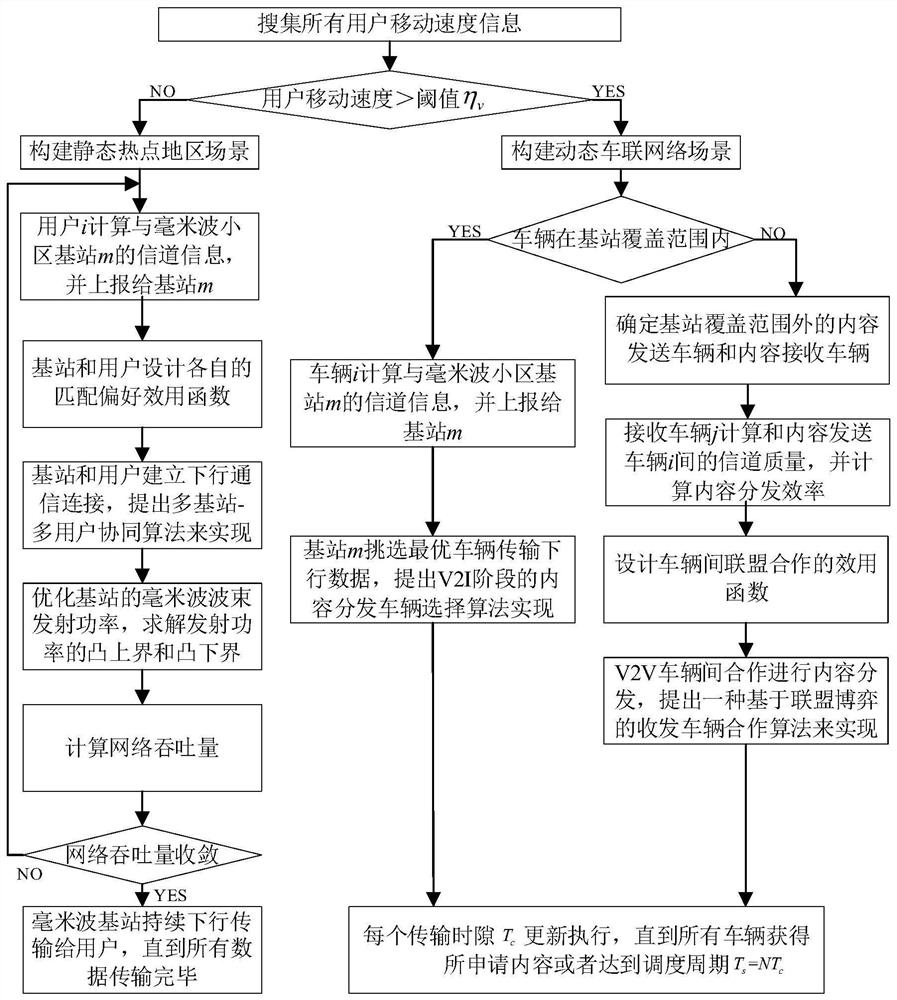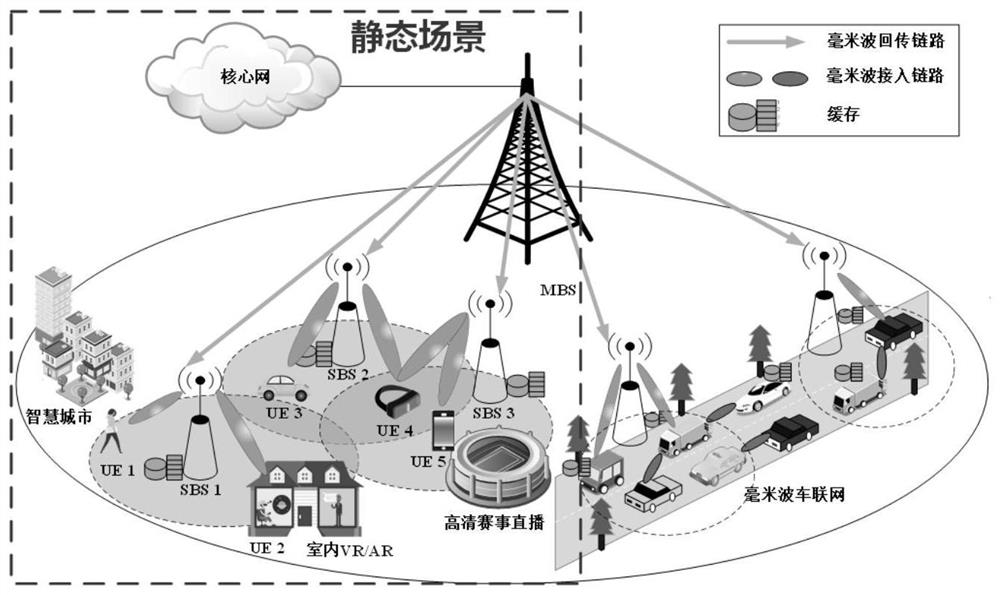Static and dynamic combined millimeter wave beam resource allocation and optimization method
A technology for resource allocation and optimization methods, which is applied in the directions of network traffic/resource management, transportation and packaging, and services based on specific environments. , Unable to meet the content requirements of vehicle differentiation, etc.
- Summary
- Abstract
- Description
- Claims
- Application Information
AI Technical Summary
Problems solved by technology
Method used
Image
Examples
Embodiment Construction
[0156] In order to facilitate those of ordinary skill in the art to understand and implement the present invention, the present invention will be further described in detail and in-depth below in conjunction with the accompanying drawings.
[0157] The present invention combines static and dynamic millimeter-wave beam resource allocation and optimization methods. Aiming at static hotspot areas, a distributed multi-base station and multi-user coordination framework based on matching theory is used to construct a millimeter-wave base station that can dynamically perceive the backhaul capability and The bilateral matching utility function of intra-base station and inter-base station beam interference realizes the efficient allocation of millimeter-wave multi-beams under the premise of low computational complexity. Using the optimization strategy of millimeter wave beam transmission power, the theoretical convex upper bound and convex lower bound of the optimal transmission power a...
PUM
 Login to View More
Login to View More Abstract
Description
Claims
Application Information
 Login to View More
Login to View More - R&D
- Intellectual Property
- Life Sciences
- Materials
- Tech Scout
- Unparalleled Data Quality
- Higher Quality Content
- 60% Fewer Hallucinations
Browse by: Latest US Patents, China's latest patents, Technical Efficacy Thesaurus, Application Domain, Technology Topic, Popular Technical Reports.
© 2025 PatSnap. All rights reserved.Legal|Privacy policy|Modern Slavery Act Transparency Statement|Sitemap|About US| Contact US: help@patsnap.com



